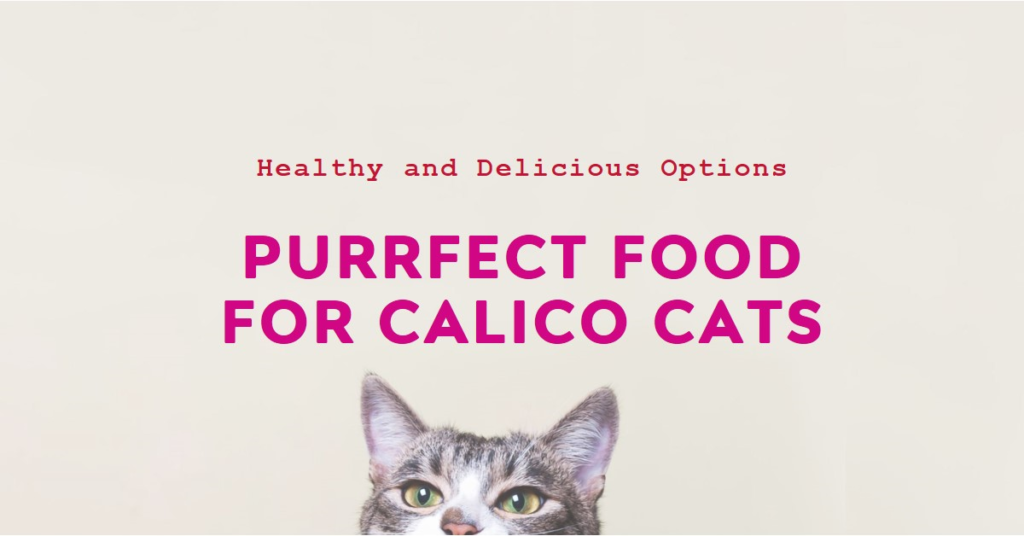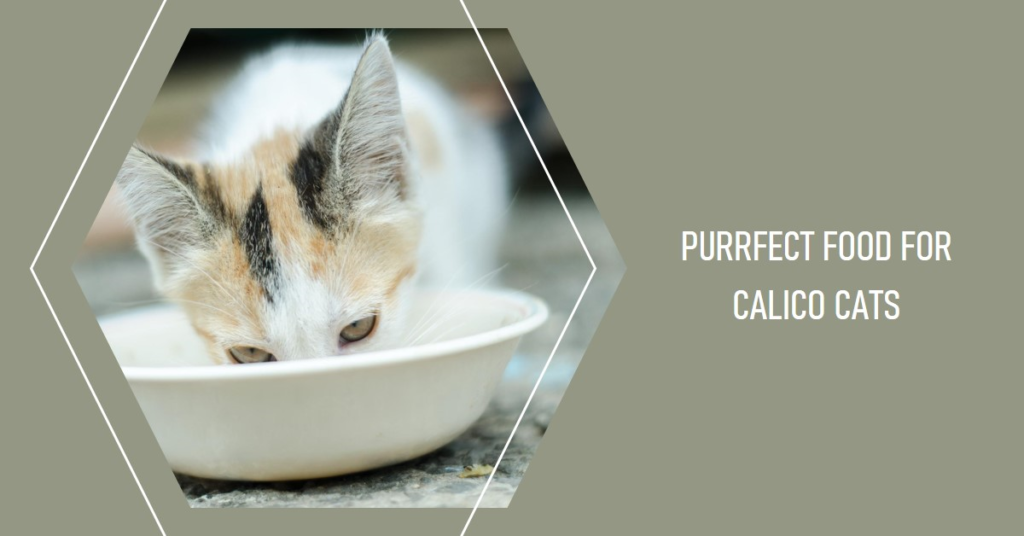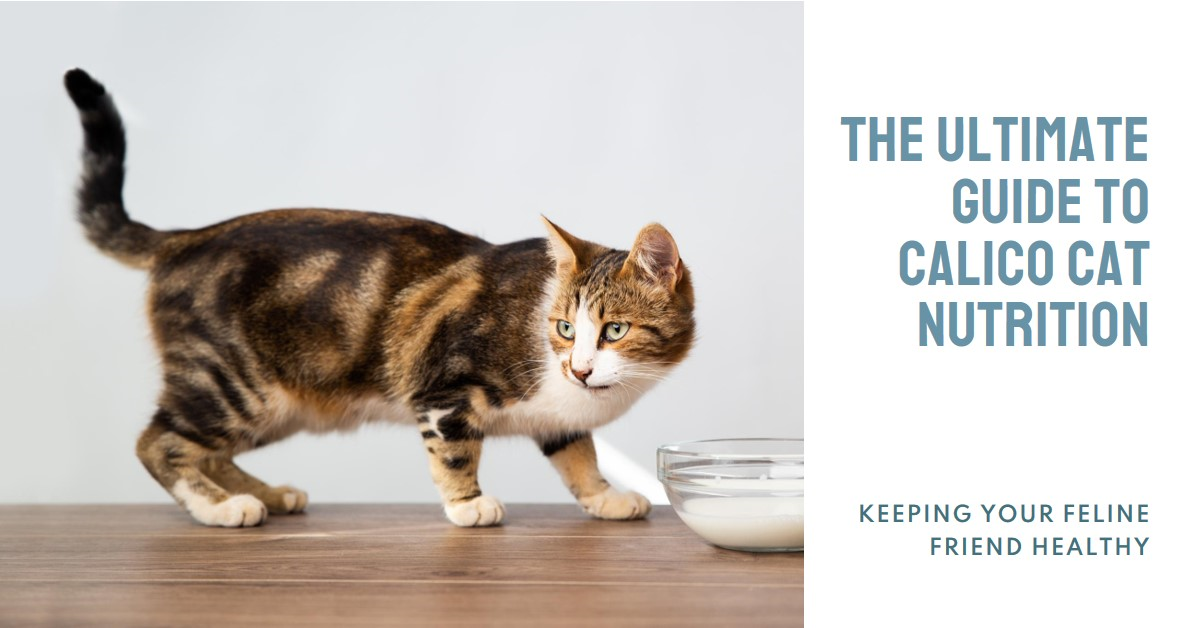Calico cats are beautiful pets loved by many families around the world. As an owner, it is important to feed calico cats the right food so they stay happy and healthy. This article will look at the best food for calico cats. We will discuss the key nutrients calico cats need and which foods provide these nutrients. We will also look at different types of cat foods, such as wet and dry food. By the end, cat owners should understand what to look for when choosing meals for their calico cat. With the right diet, calico cats can live long and active lives, bringing joy to their families each day.
Nutritional Requirements for Calico Cats| Best Food for Calico Cats

Protein
Protein is a very important nutrient for cats. It is needed to help cats’ muscles, organs, and immune systems work properly. Good protein sources for calico cats include chicken, fish, and eggs. Canned tuna or salmon are healthy treats sometimes. Dry cat food should contain at least 24% protein. The first few ingredients on the label should include meat as the main source. Meat provides amino acids and other nutrients cats require. It is best if the protein source is named “chicken” rather than just saying “poultry.”
Carbohydrates
While protein is important, carbohydrates should not make up too large a part of a calico cat’s diet. About 5-10% carbohydrates from complex carbs is sufficient. Too many carbs can cause weight gain and diabetes in cats. Good sources are whole grains like brown rice. Corn and wheat should not be high on the ingredients list as they provide little nutrition. Excess carbs can also lead to pancreatitis, which can be painful for cats. Sticking to limited whole-grain carbs and complex carbs is best.
Fats
Fat provides calories and essential fatty acids to calico cats. It should make up around 15-25% of their daily diet. Omega-3 and omega-6 fatty acids are especially important as cats cannot produce them themselves. Good fat sources include fish oils, flaxseed, and small poultry fat or egg yolks. Look for “fish fat” on the label rather than generic fat. Avoid diets high in plant-based oils as these lack the beneficial fatty acids cats require. A balanced blend of fats is best for a calico cat’s coat, skin, and neurological development.
Vitamins and Minerals
All cats need an adequate supply of vitamins and minerals daily. Calcium is important for strong bones and teeth. Look for a food that lists calcium as one of the guaranteed analyses. Vitamin A keeps eyes and skin healthy, while vitamin E is an antioxidant in their bodies. B vitamins aid the release of energy from food. Iodine, zinc, selenium, and copper are other essential micronutrients. The best way to obtain these is through balanced, high-quality cat food. Such foods are formulated with all the vitamins and minerals cats require. A good quality wet or dry food should meet all of a calico cat’s vitamin and mineral needs when fed in the recommended amounts.
Transitioning Foods
It is best to do so gradually over 5-7 days when switching a calico cat’s diet. Abrupt changes can lead to digestive upset. Slowly mix increasing amounts of the new food with the old food for each feeding. This gives their system time to adjust. Switching one protein at a time is also a good idea when possible. For example, change from chicken to fish rather than chicken to beef. Watch for any signs of diarrhea or vomiting during the transition period. If issues arise, slow the change down even more by mixing a higher ratio of old to new food. With patience, calico cats can easily adjust to healthier new diets.
Wet vs. Dry Food
Both wet and dry foods have pros and cons for calico cats. Wet food is more nutritious as it contains 75-80% water, while dry food contains around 10% water. However, dry kibble helps scrape plaque from teeth. Most experts recommend feeding a mix of wet and dry. Cats should have access to dry kibble at all times and be offered wet 3-4 times daily. With wet food, look for a variety of protein sources. High-quality proteins like fish, chicken, or lamb provide balanced nutrition. Low-quality meats hold less benefit. Well-balanced meals yield healthy, shiny coats and stable weights for calico cats.
Does People’s Food Appropriate for Calico Cats
While calico cats may beg for people’s food, most human items contain too much fat, salt, or spices and provide little nutrition. Some exceptions include an occasional lean piece of meat like chicken, excluding bones or skin. Small amounts of boiled egg, cooked salmon, or tuna are also generally okay. But people’s food should be an occasional treat, not part of their daily diet. Overfeeding human food has risks like pancreatitis and obesity in cats. It is best to stick to balanced cat-formulated meals. These are nutritionally complete and provide balanced nutrition to support calico cats’ daily health and happiness.
Signs of a Good Diet for calico cats
Calico cats eating a healthy diet will show signs like a glossy coat, bright eyes, and an ideal weight. Their energy levels stay high, and they have regular solid stools. Claws and teeth stay strong and healthy. Watch for good weight distribution with no bony protrusions. Check with your vet, but a 5-10 lbs. average weight is a good range for most calico cats. Cats on poor diets may display dull coats, weight fluctuations, and soft stools. Nutrient deficiencies could cause illness over time. Feed good quality foods, and your calico cat will thrive mentally and physically for many happy years.
What do calico cats eat in the wild?

In the wild, calico cats, like all domestic cats, are carnivores and primarily hunt small animals for food. Their diet typically consists of:
| Food | Description |
|---|---|
| Small mammals | Mice, rats, voles, squirrels |
| Birds | Sparrows, robins, pigeons |
| Reptiles | Lizards, snakes |
| Insects | Grasshoppers, crickets, beetles |
| Fish (if near water) | Small fish such as minnows and tadpoles |
These are general examples of what calico cats might eat in the wild, but their diet can vary based on their habitat and availability of prey.
What should calico cats eat?
suggested diet for calico cats:
| Food | Description |
|---|---|
| High-quality cat food | Wet or dry cat food formulated for all life stages, rich in protein and essential nutrients. Look for options with real meat as the primary ingredient. |
| Lean meats | Cooked chicken, turkey, or beef (without bones, skin, or seasoning) can be offered occasionally as a treat. |
| Fish (occasionally) | Small amounts of cooked fish, such as salmon or tuna, can be given as an occasional treat, but should not be the primary source of protein due to potential mercury content and urinary tract issues. |
| Fresh water | Provide access to clean, fresh water at all times to keep your cat hydrated. |
| Avoid | – Foods toxic to cats such as onions, garlic, chocolate, caffeine, and grapes/raisins. – Raw meat, eggs, or fish, as they can contain bacteria or parasites harmful to cats. |
It’s essential to consult with a veterinarian to determine the best diet for your calico cat based on their age, weight, health status, and specific dietary needs.
Conclusion
Calico cats need balanced nutrition tailored to their dietary needs. The right meals provide protein, fats, vitamins, and minerals in easily digestible forms. Fresh water should always be available. They combine wet and dry foods and selective people’s food occasionally, which results in the best outcome. Transitioning diets gradually prevents issues. With patience and attention to ingredients, cat owners can select diets that keep their calico cats healthy and vibrant.
Frequently Asked Questions
What are calico cats prone to?
Regrettably, male calico cats (of which only 1 in 3,000 are born male) are sterile and more likely to experience behavioral disorders, obesity, and problems with cognition and development.
Do calico cats have health issues?
Since calico cats have XXY chromosomes, they frequently have Klinefelter Syndrome. This illness may have a detrimental effect on their health and shorten their lives.
What age do calico cats stop growing?
According to PetMD, a cat is deemed “full-grown” when it turns 18 months old, which is the same age as a human being, which is 21 years old. A cat might continue to grow during those 12 to 18 months. According to PetMD, some breeds don’t achieve adulthood until two years old.
Do calico cats have a lot of energy?
Calico exotic shorthair cats are easy to care for and make lovely, loving companions. They lack the lengthy coats of Persian cats, yet they appear similarly. Compared to many other cat breeds, exotic shorthair cats usually have lower energy levels.
Also Read:


